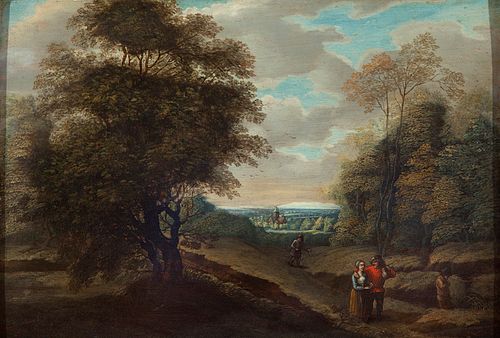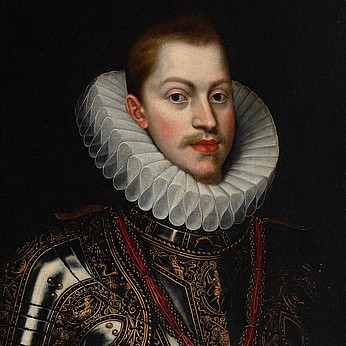Dutch school of the XVII century. "Landscape with figures". Oil on panel.
Lot 18
About Seller
Setdart Auction House
Carrer Aragó 346
Barcelona
Spain
Setdart Subastas was born in 2004 and is currently the first online art auction in Spain with solidity, prestige and reliability guaranteed by our more than 60,000 users. Setdart has a young, dynamic and enterprising team ready to successfully manage the purchase and sale of art works through custom...Read more
Estimate:
EUR€2,200 - EUR€2,500
$2,291.67 - $2,604.17
Absentee vs Live bid
Two ways to bid:
- Leave a max absentee bid and the platform will bid on your behalf up to your maximum bid during the live auction.
- Bid live during the auction and your bids will be submitted real-time to the auctioneer.
Bid Increments
| Price | Bid Increment |
|---|---|
| EUR€0 | EUR€10 |
| EUR€200 | EUR€25 |
| EUR€500 | EUR€50 |
| EUR€1,000 | EUR€100 |
| EUR€3,000 | EUR€200 |
| EUR€5,000 | EUR€500 |
| EUR€10,000 | EUR€1,000 |
| EUR€20,000 | EUR€2,000 |
| EUR€50,000 | EUR€5,000 |
About Auction
By Setdart Auction House
Nov 24, 2021
Set Reminder
2021-11-24 09:00:00
2021-11-24 09:00:00
America/New_York
Bidsquare
Bidsquare : Old Masters, Day 1
https://www.bidsquare.com/auctions/setdart-auction-house/old-masters-day-1-7873
Setdart Auction House sofia@setdart.com
Setdart Auction House sofia@setdart.com
- Lot Description
Dutch school of the XVII century. "Landscape with figures". Oil on panel. Measurements: 25 x 34,5 cm; 42 x 52 cm (frame) Of all the contributions made by northern European countries to the history of art, none has achieved the enduring importance and popularity of 17th century Dutch landscape painting. The works of Avercamp, Van Goyen, and Ruysdael, among many others, evoke the outlines, terrains, and atmospheres of the Netherlands more vividly than any other place, large or small, has ever been depicted. Dutch landscapes have acquired a preeminent place on the walls of the great Western painting museums, and today continue to delight successive generations of art lovers and painters alike. There is no doubt that the Dutch painting tradition, its different features and individual artists strongly attracted the attention of other eras. Within this tradition, the most revolutionary and enduring Dutch landscape contribution has surely been its naturalism. Seventeenth-century Dutch painters were the first to create a perceptually real and seemingly comprehensive image of their land and people. Although landscape as an independent genre appeared in Flanders in the 16th century, there is no doubt that this type of painting only reached its full development among Dutch artists. It can be said that it was practically they who invented the naturalistic landscape, which they affirmed as an exclusively central feature of their artistic heritage. There is no doubt that the Dutch painter, filled with pride for his land, knew how to show through his paintings the beauty of its vast plains and overcast skies, the regular layout of its canals and rivers full of meanders, its polders and dikes, its beaches and, of course, its spectacular stormy seas. The Dutch vision of reality, almost as literal as photography, does not so much trace the contours or examine the topography of its surroundings as it naturally selects and reshapes nature to present it in an exemplary way.
- Shipping Info
-
In-house shipping available. Please inquire at admin@setdart.com.
-
- Buyer's Premium



 EUR
EUR CAD
CAD AUD
AUD GBP
GBP MXN
MXN HKD
HKD CNY
CNY MYR
MYR SEK
SEK SGD
SGD CHF
CHF THB
THB














